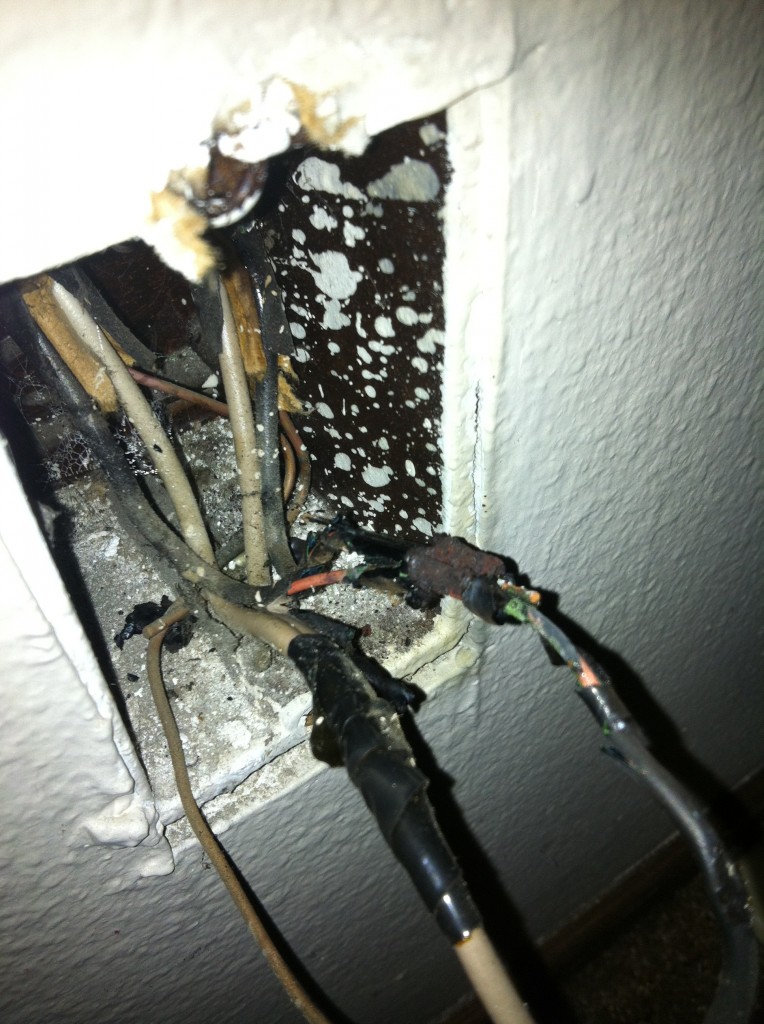Crimp-barrel splicing is an old, outdated method of splicing wires that was used from the 1960’s through the 1980’s in millions of tract homes across America. Crimp-barrel splicing preceded the wire-nut, which is the best method for splicing wires today. Crimp splicing unfortunately, was done wrong in almost all the homes here in the bay area. The wires to be spliced were supposed to be twisted together and then crimped with a 4-point crimp tool. Some how, the trend for crimp splicing in tract-homes changed from pre-twisting the wires and crimping with a 4-point crimp tool to just lining up the wires side-by-side and crimping them with a 2-point crimp tool.
This faster method of crimp splicing proved to be a terrible way to splice wires and remains the number one culprit of electrical house fires today. If you are lucky, you lose power on a circuit due to a crimp-splice arcing and burning out, staying contained inside of the electrical junction box that houses the outlet or switch. If you aren’t so lucky, the arcing doesn’t stay contained in the junction box and you have a house fire. The reason that this method of splicing isn’t reliable is because the conductors in the splice often don’t have enough surface area of copper compressed to the barrel or to the other conductors. What happens is, when the current or wattage flows through the splice and there isn’t enough surface area of copper to accommodate all those electrons trying to get through, things get hot. Some of the electrons are now creating an arc so they can get across the splice. Black carbon begins to form and the copper begins to deteriorate. Once carbon is coating the copper, things get even worse with heat and arcing. This is now a potential fire hazard, all the tape has melted away and it’s as if you were striking a piece of flint against a stone, trying to start a fire.
If your house was built between 1960 and 1980 there’s a good chance that the splicing method used was crimp-barrel, give us a call and set up an appointment to find out. We will go through and re-splice every single one of these splices with wire-nuts, and install all new devices. Not only will you be a lot safer, but it really cleans up the look of your home having new shinny devices. Not to mention, your existing outlets can probably use replacing seeing how over time they often become loose and don’t hold plugs in very well, which is also a fire hazard.

